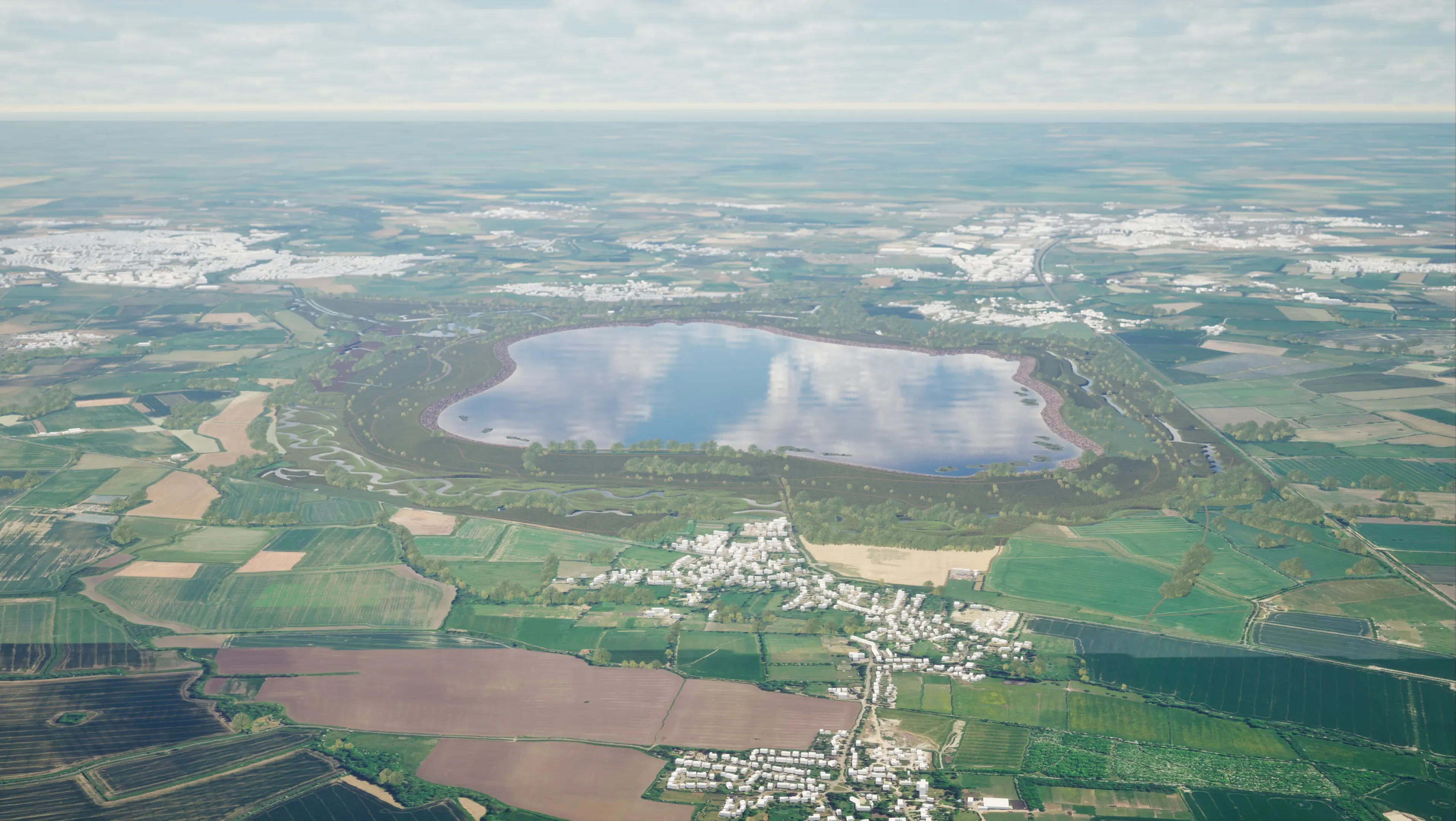Latest news
Thames Water secures planning consent for reservoir embankment trial
9 May 2024

- The UK’s largest water company has secured planning approval for a reservoir embankment trial which will inform design plans for a proposed reservoir near Abingdon.
- The trial will use land within the proposed reservoir site, to create a test embankment, assessing how much water it absorbs and how the clay changes when compacted.
- The assessment is of critical importance as Thames Water works to secure future water supplies for around 16 million people across the South East.
A reservoir embankment trial, that will help to inform Thames Water’s plans for a new reservoir in Oxfordshire, has received planning approval from Vale of White Horse District Council.
The green light from the council’s planning committee means Thames Water can develop its understanding of the ground conditions at the site, southwest of Abingdon, where it proposes to build a new 150Mm3 reservoir.
This is a major step in developing the design proposals for the reservoir, known as SESRO (South East Strategic Reservoir Option). It’s anticipated that contractors working on behalf of Thames Water will begin embankment trials this summer to understand how the local clay reacts when compacted.
During the trial the company will excavate the clay and layer it into three mounds, each 50 metres long, 20 metres wide, and up to 2 metres high. The programme of work will complement ground investigations that are already underway.
Leonie Dubois, Thames Water’s Head of Engagement, Land and Consents said: “We listen carefully to residents and understand that they want assurances about the design and integrity of the reservoir. This is why we’re starting the process to understand local ground conditions at a really early stage.
“As the population grows and the effects of climate change continue to take hold, demand for water will only increase. We’re serious about tackling water leakage and reducing consumption levels, but that alone isn’t enough. We must build more resilient infrastructure to avoid a future crisis and the reservoir has a vital role to play.”
The results from the trial, which will take place over a 12-month period, will play a crucial role in informing the engineering design and embankment construction proposed for this vital new water supply.
The scale and significance of SESRO, as a means of tackling future water shortages for the southeast, has led to its classification as a nationally significant infrastructure project (NSIP). The reservoir would help to secure future water supply for local Oxfordshire residents, as well as 16 million people across the Thames Water, Southern Water and Affinity Water catchments.
The strategic case for the reservoir is outlined in Thames Water’s revised draft Water Resources Management Plan, which is currently with the government for consideration. The plan sets out a range of investment measures proposed to combat the effects of climate change and population growth in London and the wider southeast region.
Lee Dance, Organisational Director at Water Resources South East, said: “SESRO is a important part of the forward-looking programme of investment in our water supplies, set out in our regional plan, which will provide water to people across the South East.
“It’s critical we have the right infrastructure in place to meet the challenges ahead, including climate change and population growth, and to help us leave more water in our rivers and streams to help protect our region’s environment. It’s encouraging to see Thames Water progress plans for a new reservoir with its clay compaction trial.”
Proposals for the new reservoir are being driven by Thames Water’s Strategic Resource Options (SRO) team, a dedicated project team tasked with delivering solutions to tackle the future drought scenarios which threaten London and the southeast.
SESRO will play a crucial role in protecting local and regional public water supplies during periods of drought and will also help Thames Water to protect and improve the environment by reducing abstractions from some of its most sensitive rivers and groundwater sources.
Thames Water’s SRO team is currently preparing for a programme of public consultation, and throughout the summer months, local communities will be asked to share their views on the latest proposals for the reservoir, with feedback shaping the plans.
While the primary purpose of the reservoir is to secure future water supply, the company aims to create a much-loved community resource, where people can walk, cycle and sail.
Should Thames Water secure government approval for SESRO, it intends to submit a Development Consent Order (DCO) in 2026, seeking permission to construct and maintain the new reservoir. If granted, construction is forecast to begin in 2029 with SESRO planned to begin operating in 2040.
For more information about SESRO, visit the company’s website.